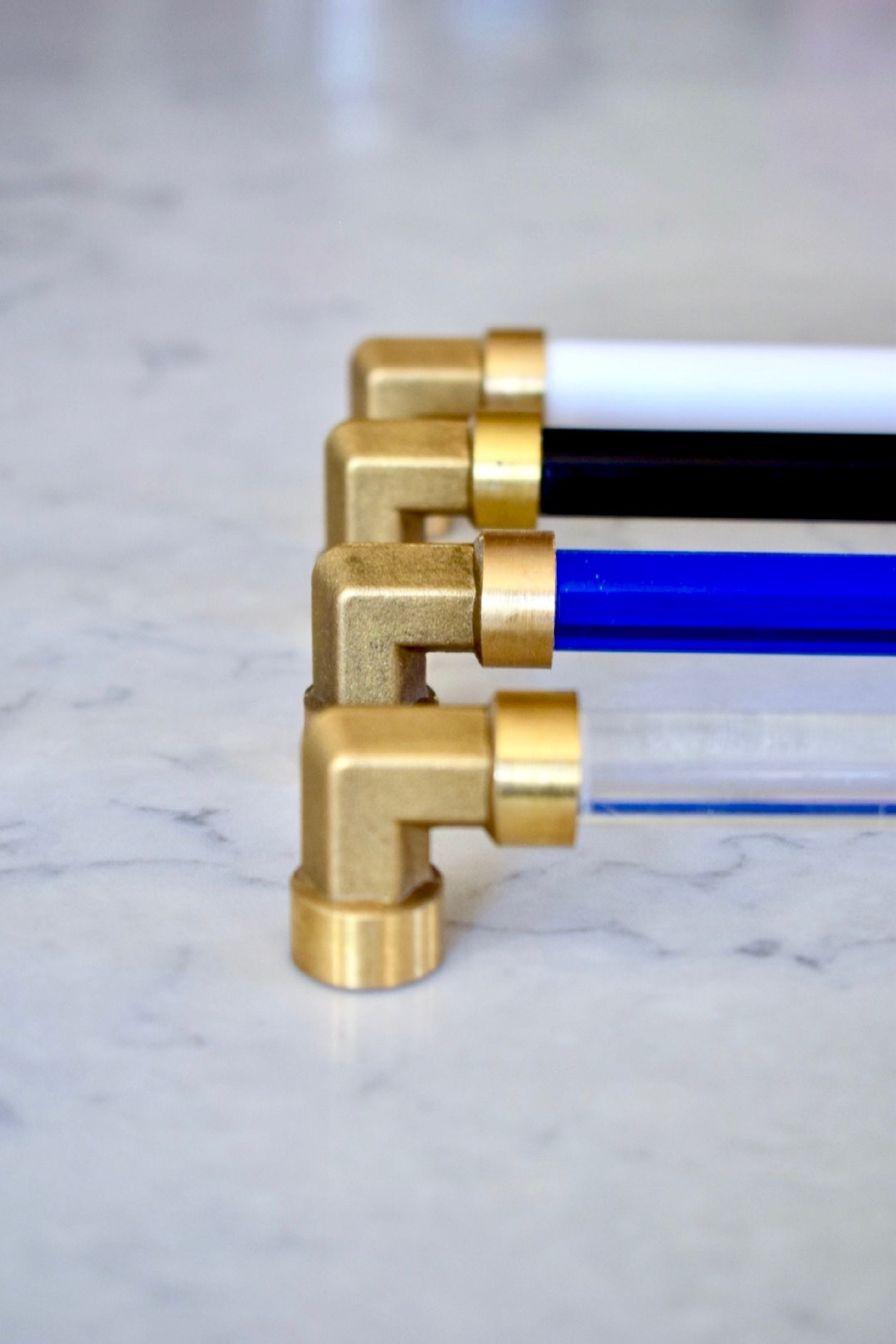
Cut a 3/4 inch scrap of wood to use as a template that is a couple inches longer than the total length of the pull. Prep the mounting brackets by sanding the inside of the stem where the rod will be glued into place. Step 3: Glue the mounting brackets to the acrylic rod. The acrylic sort of melts/sands and removes fast, so it is a good idea to experiment with a scrap to get the hang of it. I used a belt sander turned upside down which worked great. Don’t worry about perfection, just get the rod so that it will fit into the mounting bracket. Remove tape or film to expose 3/8” of the rod, then use sandpaper to tool the rod to the desired taper. Step 2: Taper the ends of your rod to fit into the mounting brackets. Measure and cut the rod with normal wood working tools, being careful not to scrape or scratch the rod.

The rods can be polished if they do get scratched for a little extra shine, but better to protect them and create as little polishing work as possible Mine did not have this film so I wrapped my rods in blue painter’s tape. Sometimes the acrylic rods come with a protective film on them, if so, don’t remove this until the end as it will help protect your rod from getting scratched and dulled. Washer, 1 1/2” knob screw, & spacer from local hardware store. They come in 72” standard lengths which has to ship freight,so if you need to have them shipped, call the shop you order from to see if they will cut to your length and it will save you a lot on shipping. $1.00 (there are bulk discounts so I got mine for $0.80)ĥ/8 inch acrylic rod, I got mine from Interstate Plastics which has a store locally, but most plastic stores carry them. So to keep my hubby happy (he had major sad face when I showed him the pull), and save a few $$$, I decided to DIY my own drawer pulls.ģ Piece Dark Solid Oak Pull from D.

This is my favorite pull that I found while shopping, but even on sale at $264.00 down from $330.00, it’s a little more than what I want to spend. Maryville TN House Tour – Completed Rooms.


 0 kommentar(er)
0 kommentar(er)
